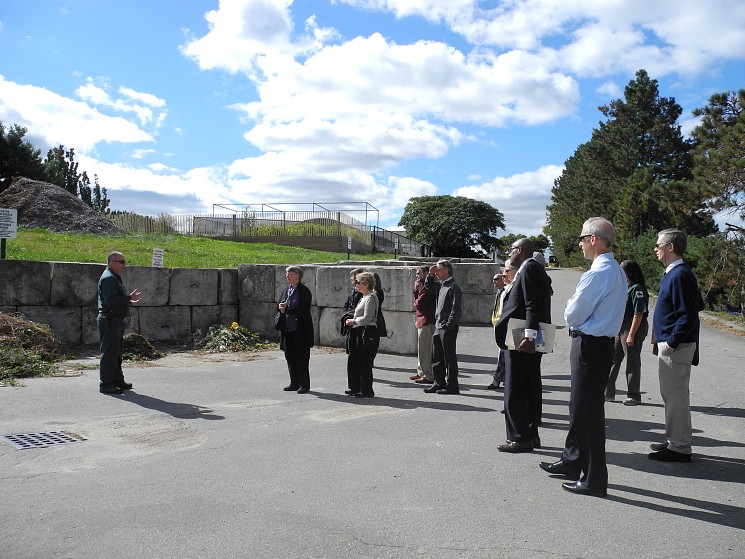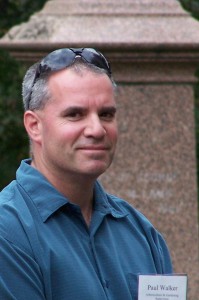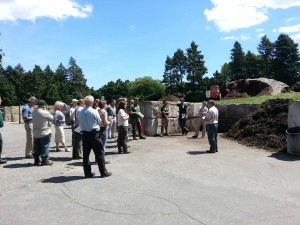A Better Soil, A Better Mount Auburn: An Interview with Paul Walker

 Superintendent of Grounds, Paul Walker, has been a leader in implementing many of Mount Auburn’s best practices for the sustainability of our grounds. Paul is responsible for the creation of the new Recycling Yard, but a collective effort by the staff has resulted in great success. Our efforts have been turning all organic and horticultural waste into usable products, relying less and less on synthetic materials, and letting our own compost, topsoil, and mulch have their natural effects on the landscape. Slowly but surely, we are building a better soil and a better Mount Auburn.
Superintendent of Grounds, Paul Walker, has been a leader in implementing many of Mount Auburn’s best practices for the sustainability of our grounds. Paul is responsible for the creation of the new Recycling Yard, but a collective effort by the staff has resulted in great success. Our efforts have been turning all organic and horticultural waste into usable products, relying less and less on synthetic materials, and letting our own compost, topsoil, and mulch have their natural effects on the landscape. Slowly but surely, we are building a better soil and a better Mount Auburn.
After the initial step of constructing a new Recycling Yard, the space was more efficient, safer, and condensed our footprint. We were now able to collect our organic waste, and instead of all of it going into a pit across the street, we separated everything from shrub prunings, leaves, and woodchips to displaced soil from interments, and were able to recycle the materials into a number of different products that are used to reduce our reliance on synthetic means like soil fertilizer, pesticides, and herbicides.
Our own high quality compost is used as a top dressing for re-seeding, as fertilizer, and as a soil amendment for any new shrub and tree plantings as well as used in some of our historic tree preservation work; it retains water moisture and improves overall soil quality. The Greenhouse staff also uses it in their potting mix. Fallen leaves from the trees are essential in the production of our mulch. Made by mixing leaves with woodchips produced onsite, it is ground into a fine, organic material and used in the landscaping of the grounds. In the past, we would purchase 200 yards of mulch per year. Our topsoil is a combination of excess interment fill and decomposed leaves. Everything produced onsite is reused except small amounts of concrete and asphalt.
“All of the products we make allow us to return the organic materials back to the soil. We’re building a sustainable program from the ground up. If you have healthy soil, you have a healthy landscape,” says Paul. “Whether it’s in the compost we use, the topsoil we use, or the mulch, it’s all in an effort to create a healthier soil and reverse any past negative effects of using synthetic materials. We want to return the natural balance between our soil and plant ecosystems.’

His advice for those interested in starting to employ ‘green’ habits in their yards at home is to eliminate turf wherever possible in favor of planting perennial beds. Paul maintains a compost area and vegetable garden; native plants are preferred as they have a better survival rate, and acclimate to soil conditions and water nutrient availability. By watching the ecosystem around your home, you can make adjustments to your routine to become more efficient and sustainable.s in the compost we use, the topsoil we use, or the mulch, it’s all in an effort to create a healthier soil and reverse any past negative effects of using synthetic materials. We want to return the natural balance between our soil and plant ecosystems.”
Leave a Reply